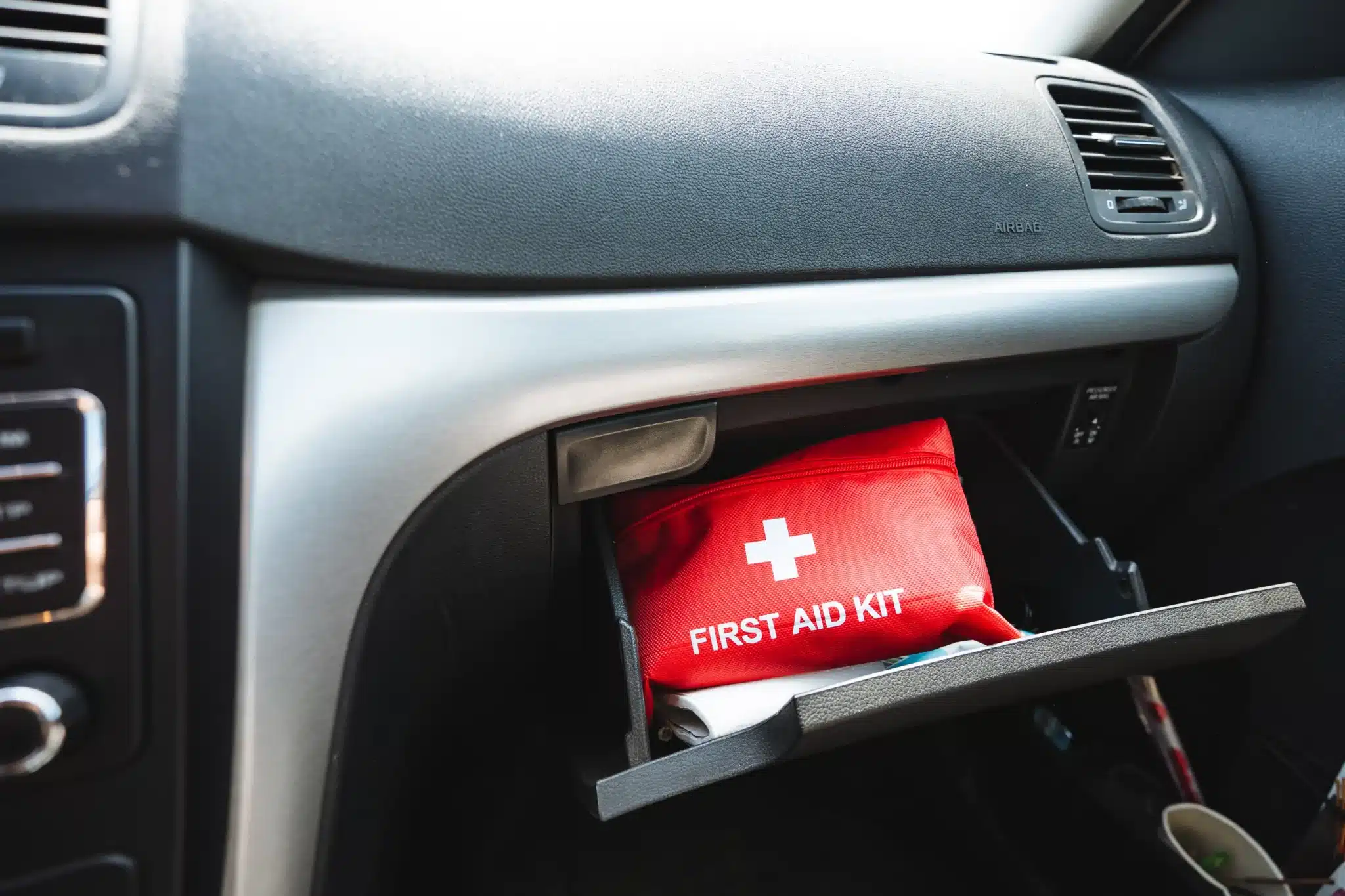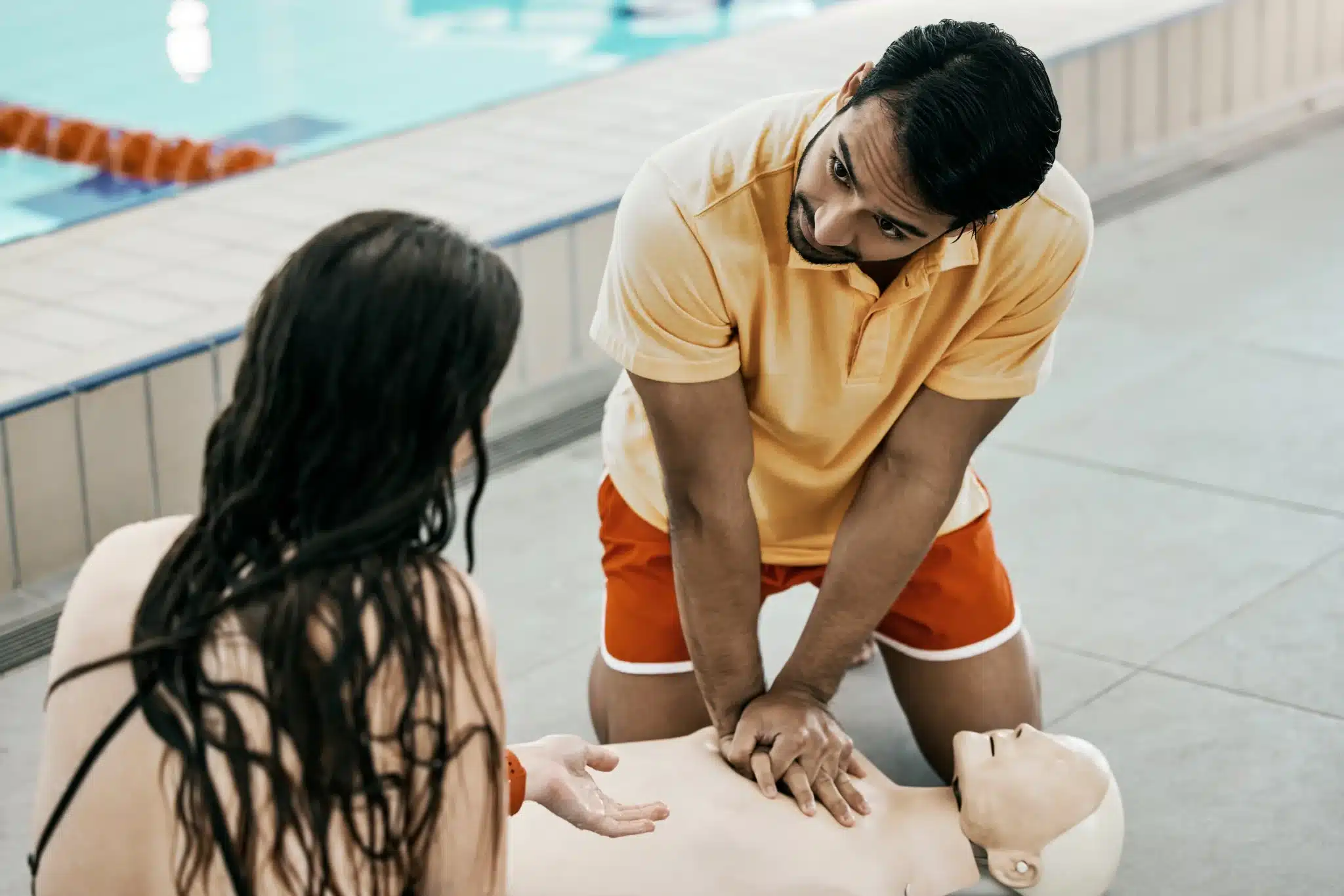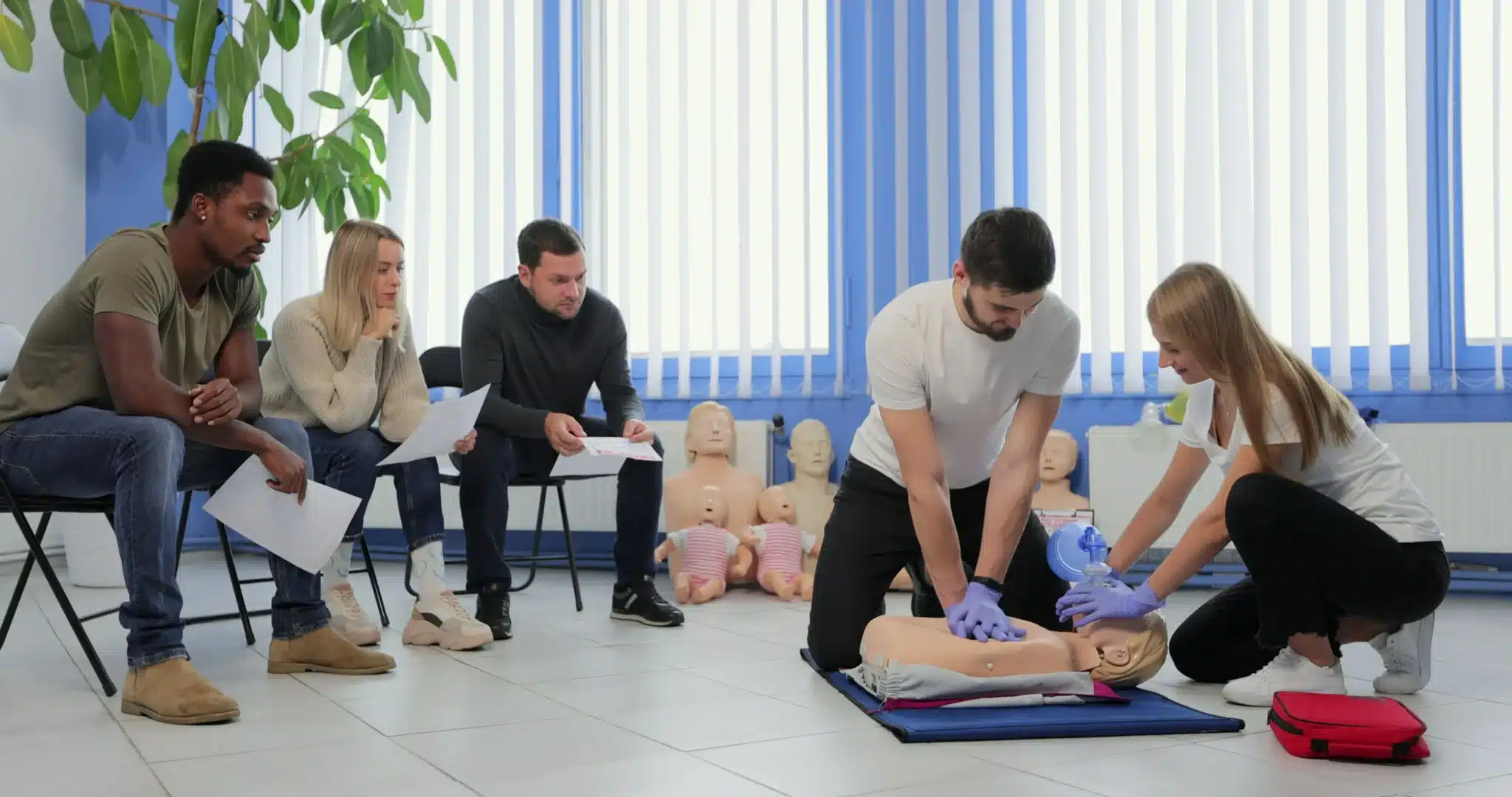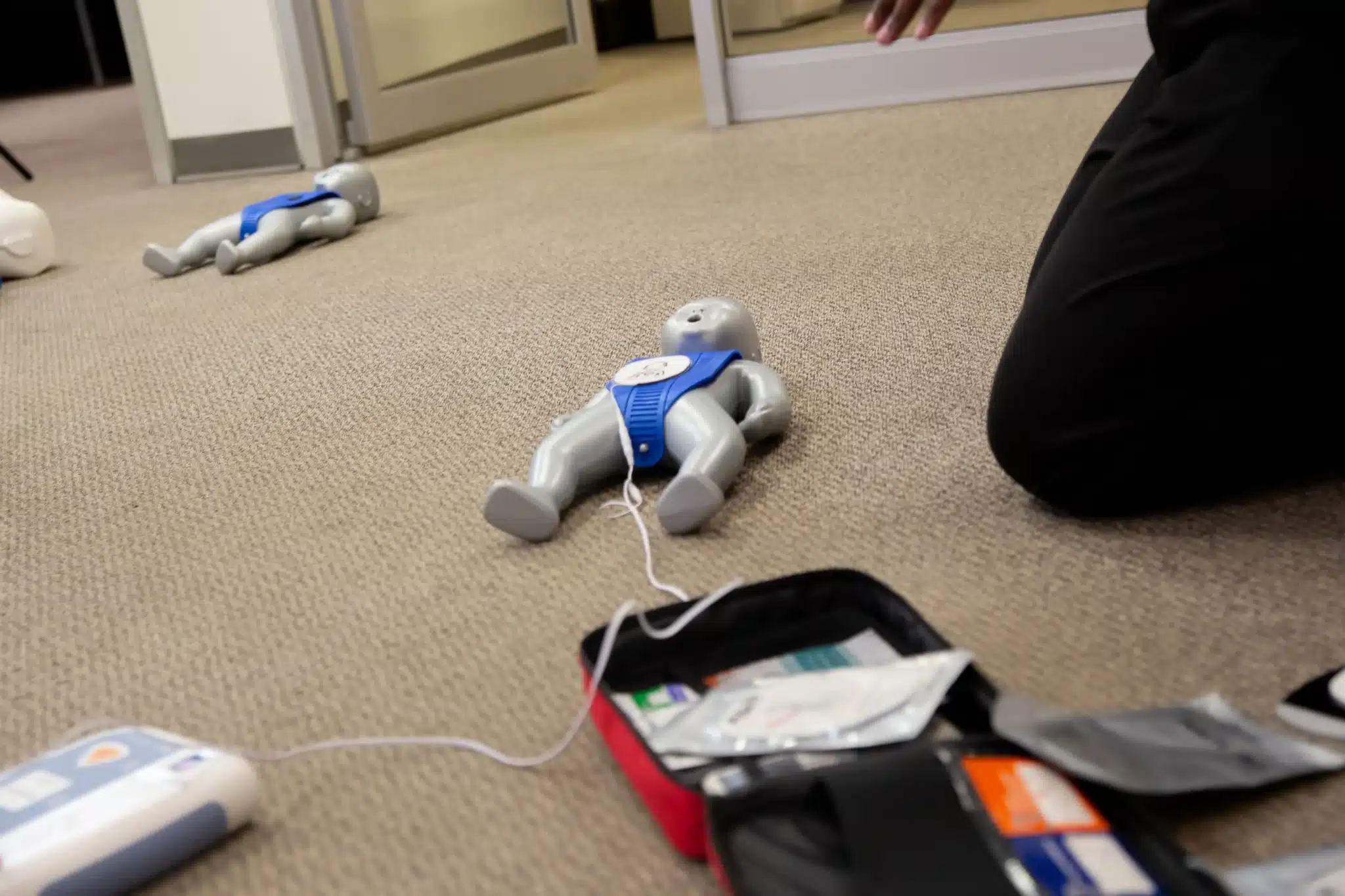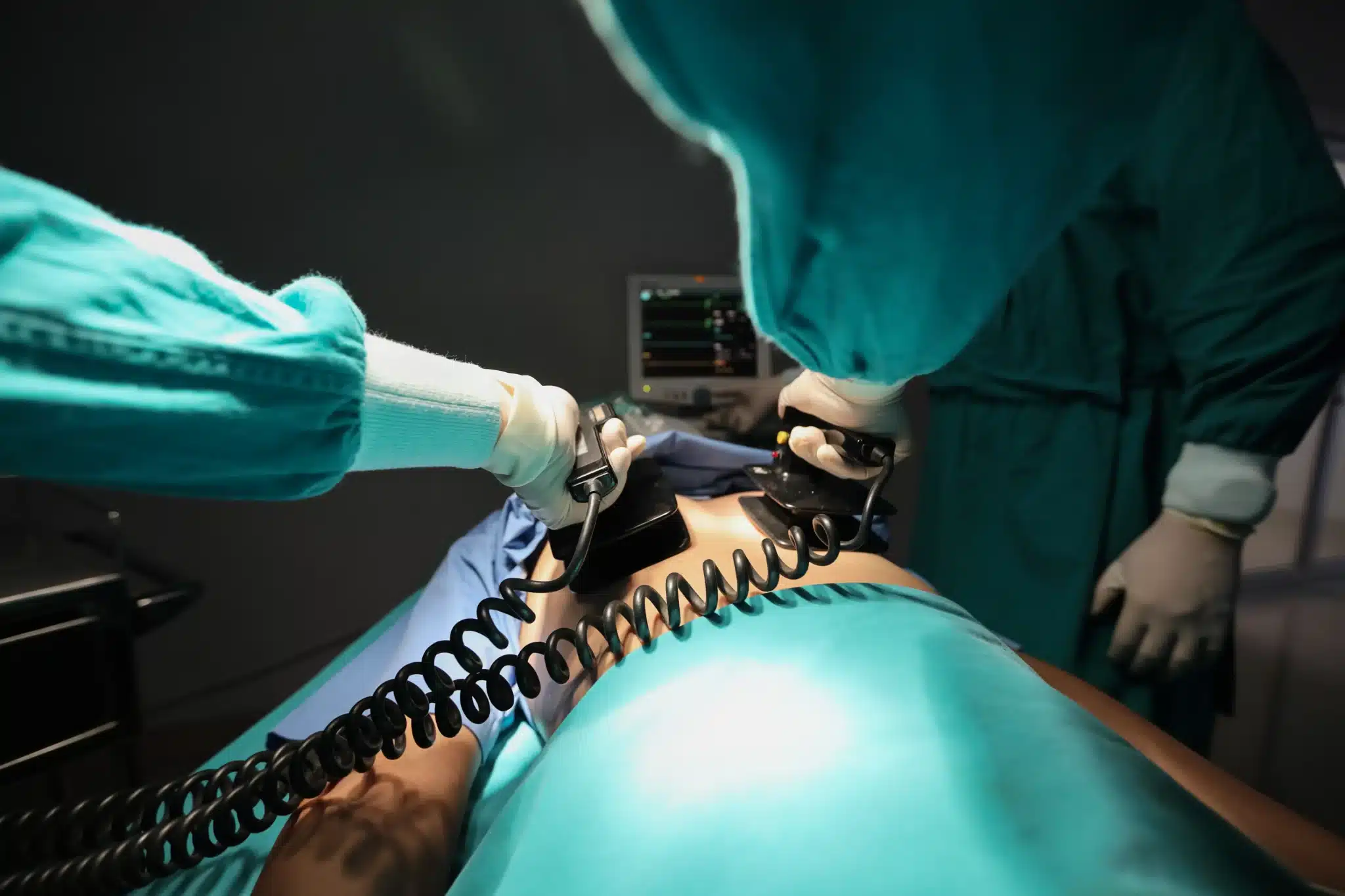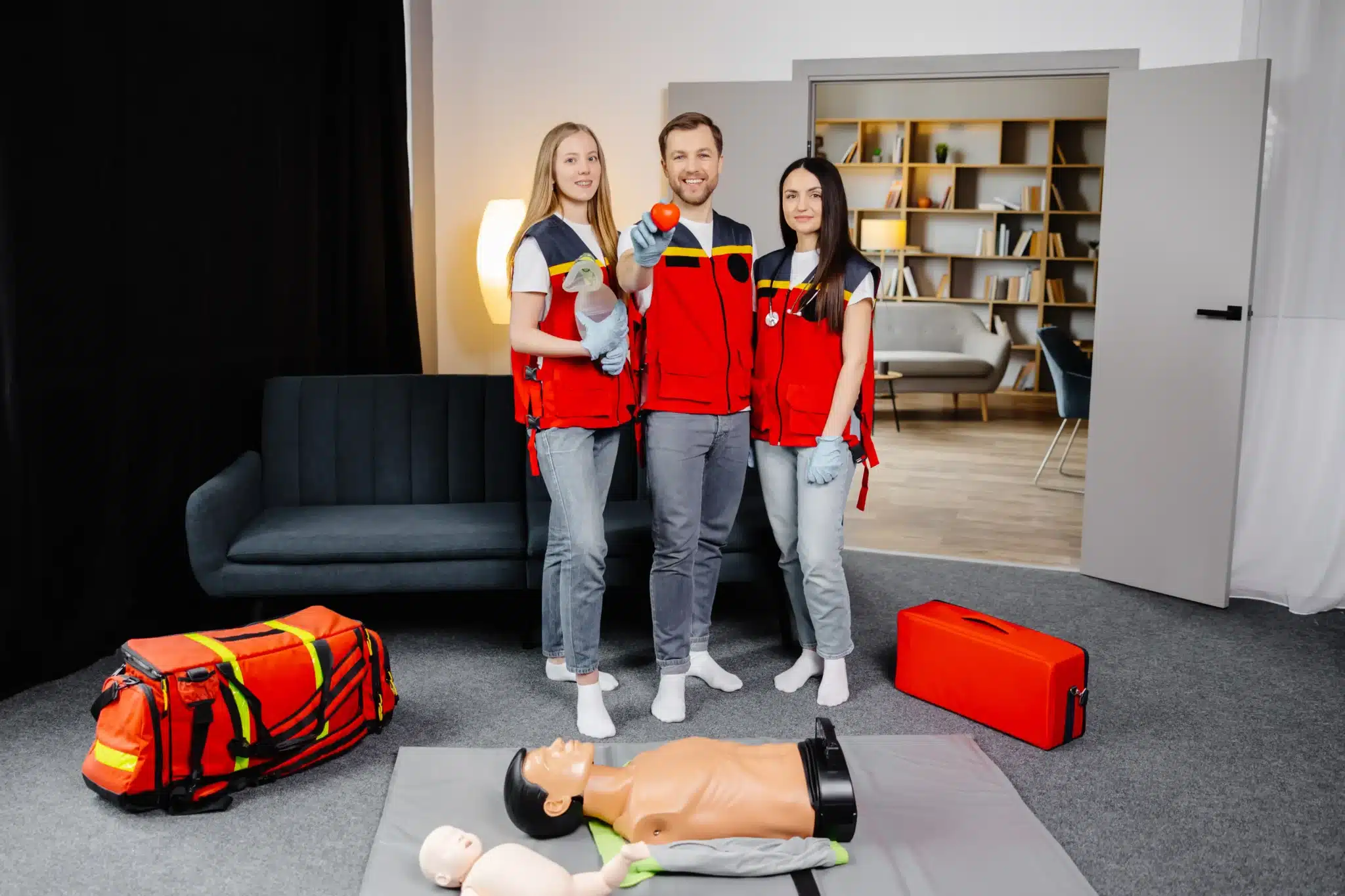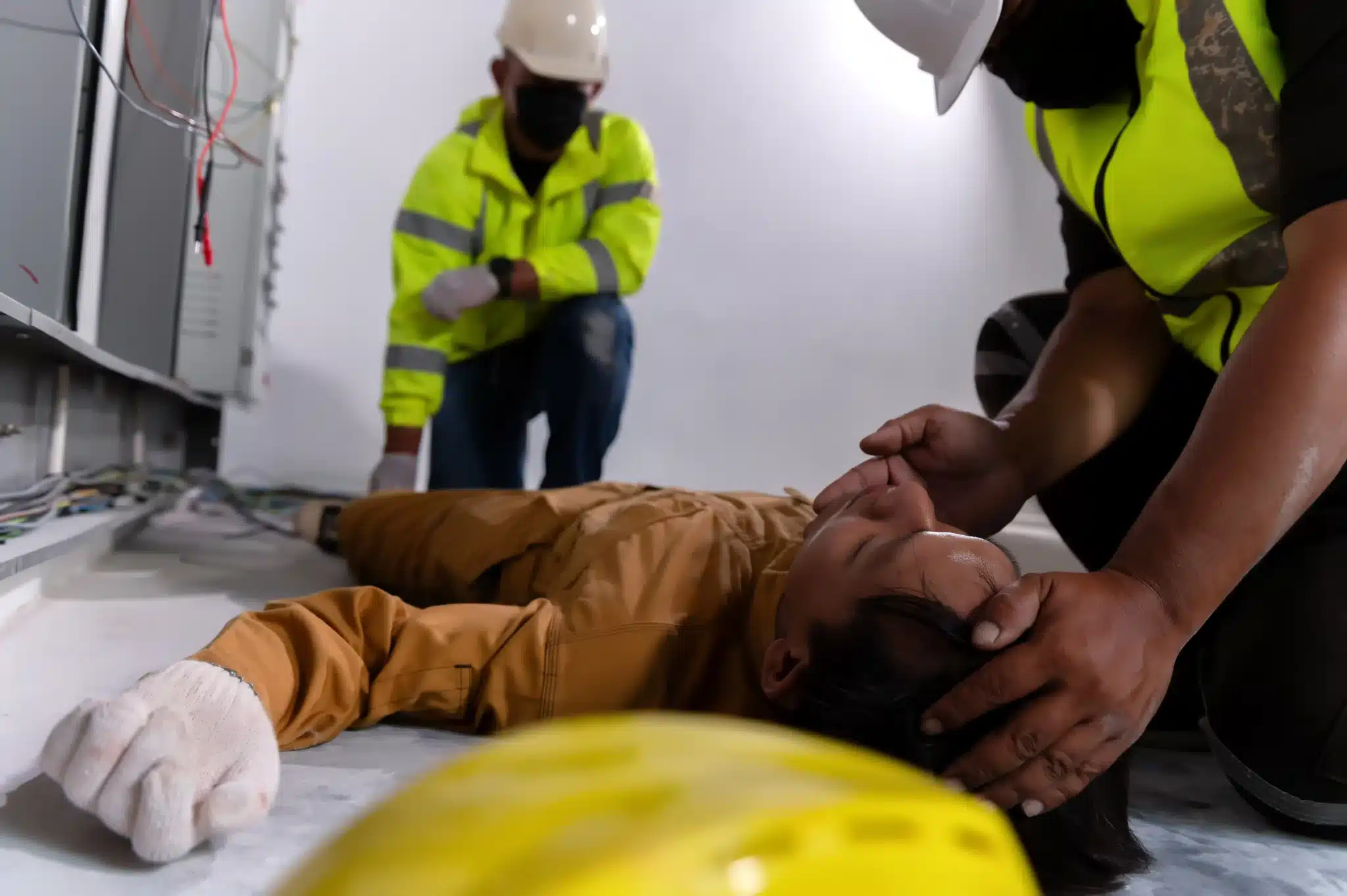In a world where the unexpected can happen at any moment, knowing first aid is more than just a good idea—it’s a vital skill. This guide is designed to help you find the right “first-aid classes near me,” providing a comprehensive overview of first-aid training. We’ll explore different types of courses, what to expect in a class, and how to choose a qualified instructor. We’ll also discuss the costs involved and how long certifications typically last. Whether you’re looking to enhance your personal preparedness, advance your career, or make a difference in your community, this guide will help you find the perfect first-aid training program to meet your needs.
Key Takeaways
- First aid skills are essential for everyone: Equipping yourself with the knowledge to handle medical emergencies, from minor injuries to life-threatening events, can make a significant difference. Find a course that aligns with your individual needs and desired level of preparedness.
- Select a reputable training provider and certified instructor: Look for instructors with real-world experience and organizations with accreditations from trusted organizations like the American Heart Association or the Red Cross. Consider factors such as class size and student testimonials when making your decision.
- First-aid training benefits you and your community: Learning first aid enhances your personal and professional life, while also contributing to a more prepared and resilient community. Maintain your skills and stay up-to-date with the latest guidelines by renewing your certification regularly.
What are First-Aid Classes?
First-aid classes equip you with the skills to handle medical emergencies until professional help arrives. Different first-aid courses cater to various needs and situations. Let’s explore some common types:
Basic First Aid
Basic first-aid training provides fundamental skills applicable in various settings. These courses cover essential techniques like treating minor wounds, burns, sprains, and recognizing the signs of a medical emergency. Basic first aid is valuable for anyone, from office workers to stay-at-home parents. It empowers you to respond effectively to everyday incidents and potentially life-threatening situations. For more information on debunking first-aid myths, check out this helpful article.
CPR and AED Training
CPR (Cardiopulmonary Resuscitation) and AED (Automated External Defibrillator) training teaches you how to respond to cardiac arrest. You’ll learn how to perform chest compressions, rescue breaths, and use an AED. CPR certification is often a requirement for healthcare professionals, but it’s a beneficial skill for everyone. Knowing CPR can make a profound difference in a life-or-death situation. Consider enrolling in CPR classes in Fremont to gain this invaluable skill. You can also find additional information on CPR training in Fremont.
Pediatric First Aid
Pediatric first-aid courses focus on the specific needs of infants and children. These courses cover topics like choking, fever, allergic reactions, and injuries common in young children. Pediatric first aid is essential for parents, caregivers, teachers, and anyone who regularly interacts with children. It provides the knowledge and confidence to respond appropriately to emergencies involving young ones. For those interested in learning more about pediatric first aid and other related courses, you can explore options for CPR and first-aid classes in Fremont.
Specialized Courses
Beyond basic first aid, CPR, and pediatric first aid, specialized courses are designed for specific professions and situations. These can include wilderness first aid, BLS (Basic Life Support), ACLS (Advanced Cardiovascular Life Support), and more. These advanced courses delve into more complex medical scenarios and techniques. Consider specialized training if your job or lifestyle requires a higher level of medical knowledge. Fremont CPR Classes offers a range of AHA courses including BLS and ACLS certifications, to meet diverse needs.
What Happens in a First-Aid Class?
Knowing what to expect can help you feel prepared and confident going into your first first-aid class. Here’s a glimpse at the typical format and curriculum:
Course Structure
First-aid and CPR certification courses typically run between one and two days, depending on the training level and the provider. Expect a blend of classroom learning, demonstrations, and hands-on practice. Instructors present information using lectures, videos, and interactive discussions. They’ll also guide you through scenarios and simulations to build your skills and confidence.
Hands-on Practice
A significant portion of any good first-aid class involves hands-on learning. You’ll practice essential skills like CPR on mannequins, bandaging simulated wounds, and learning how to safely move an injured person. This practical experience is crucial for developing muscle memory and the ability to react effectively in a real emergency. First-aid classes cover various topics, from basic life support to managing injuries like burns, fractures, and choking.
Class Size and Student-to-Instructor Ratio
The ideal student-to-instructor ratio allows for personalized feedback and ample practice time. A good benchmark is around 20:1, ensuring each student receives individual attention and support. This balance creates a comfortable learning environment where you can ask questions, practice your skills, and receive guidance from a qualified instructor. When researching courses, consider class size to ensure you get the most from your training.
How Much Do First-Aid Classes Cost?
Knowing the cost of first-aid training is an important step when choosing a class. Several factors influence pricing, so understanding them will help you find the best value.
Factors Affecting Price
One of the biggest factors affecting price is whether you need certification. An informational CPR course costs less than one leading to first aid training certification. Certification means you’ve proven your knowledge of how to perform CPR, use an AED, and handle emergencies like choking or heavy bleeding. A certified course requires more comprehensive instruction, impacting the overall cost. The type of course also matters. Basic first aid and CPR classes typically cost less than specialized courses like ACLS (Advanced Cardiovascular Life Support) or PALS (Pediatric Advanced Life Support).
Average Cost Range
A two-hour course covering CPR and AED usage costs an average of $35 per person. More advanced or longer courses will naturally be more expensive. Fremont CPR Classes offers competitive pricing on various courses, from basic CPR training to specialized certifications like BLS. Investing in a reputable training center with experienced instructors is key, even if it means a slightly higher upfront cost.
Group Discounts and Promotions
If you’re training with a group, look for discounts. Many providers, including Fremont CPR Classes, offer reduced rates for group bookings. An employer might book a class for eight or more students at a discounted price. Fremont CPR Classes prioritizes high-quality instruction and convenient scheduling, and offers group discounts to make training more accessible. Keep an eye out for promotions, especially around certain times of the year. Contacting the training center directly to inquire about group rates or special offers is always a good idea.
What Makes a Qualified First-Aid Instructor?
Choosing the right first-aid instructor is just as important as choosing the right class. A qualified instructor can make all the difference in how much you learn and how prepared you are for real-life emergencies. Here’s what to look for:
Required Credentials
First and foremost, your instructor should be certified by a reputable organization, like the American Heart Association or the American Red Cross. These organizations maintain rigorous standards, ensuring instructors receive high-quality training and stay up-to-date on the latest first-aid practices. A certified instructor demonstrates a commitment to professional development and a dedication to established guidelines. Also, check if the training provider itself is accredited, which adds another layer of quality assurance. CPR Certification Now offers helpful advice on selecting a quality first-aid training provider. For example, Fremont CPR Classes is a woman-owned American Heart Association Training Center, offering courses in over 60 cities. You can find more information about our BLS certification and ACLS certification on our website.
Experience in Emergency Response
Beyond certifications, real-world experience is essential. An instructor who has handled actual emergencies brings a practical perspective that textbooks just can’t match. They can offer real-world insights, share personal stories, and answer your questions from firsthand experience. This practical knowledge enriches learning and helps you understand how to apply first-aid skills effectively in stressful situations. Training Lives emphasizes the importance of choosing instructors with practical experience. Look for instructors who have worked as EMTs, paramedics, or in other related fields. Their experience will boost your confidence in their ability to teach and prepare you for any situation. If you’re looking for first-aid classes in Northern California, check out our CPR directory or contact us for more information. We offer group discounts as well.
How Long Does First-Aid Certification Last?
Knowing how long your first-aid certification is valid is key to confidently handling emergencies. Let’s break down the typical timeframe and how to stay certified.
Typical Certification Periods
First-aid certifications are typically good for two years. This standard period ensures you regularly refresh your skills and knowledge, keeping up with best practices. Keep track of your expiration date—add it to your calendar or set a reminder. Staying organized ensures you’re always ready to help when needed. Check out the American Red Cross for various first-aid courses and certifications.
Renewing Your Certification
To keep your skills sharp and stay on top of current guidelines, renew your certification before it expires. Organizations like the Red Cross offer refresher courses covering updated techniques and procedures. These classes reinforce your knowledge and introduce any new developments in first aid. Regularly brushing up on your skills means you can respond to emergencies effectively and with confidence. First-aid training is an investment in your ability to provide vital assistance when it matters most.
Why Take First-Aid Classes?
Learning first aid is a smart move, whether you want to advance your career, feel more confident in emergencies, or simply help your community. It’s a skill that can make a real difference.
Personal Preparedness
First-aid training empowers you to handle emergencies effectively. Imagine you’re at a park and witness an accident, or a family member experiences a sudden medical issue at home. Knowing first aid can help you stay calm and take control. It equips you with the skills to assess injuries, control bleeding, manage shock, and provide immediate care until professional help arrives. This quick action can significantly increase the chances of survival and minimize the severity of injuries. It’s about being prepared for the unexpected and having the confidence to act when it matters most. First-aid training prepares you to respond effectively and assist others.
Professional Development
First-aid certification can open doors in your career. Many professions, especially in healthcare, education, childcare, and public safety, require or prefer candidates with first-aid and CPR training. Even if it’s not a strict requirement, having these certifications on your resume shows you’re committed to safety and preparedness, making you a more desirable candidate. It tells potential employers that you’re proactive, responsible, and capable of handling critical situations. Plus, first-aid training can be valuable for career advancement, especially in roles involving supervising others or working with vulnerable populations. Employers often seek candidates with this training.
Community Impact
First-aid training isn’t just about individual preparedness; it’s about building a safer community. When more people are trained, the entire community benefits. It creates a network of people ready to respond to emergencies, whether it’s a natural disaster, a community event, or simply a neighbor in need. By learning first aid, you contribute to a culture of safety and preparedness, making your community more resilient and better equipped to handle unexpected events. It’s a way to make a positive impact and create a safer environment for everyone.
How to Choose the Right First-Aid Class
Finding the right first-aid class is like finding the right pair of shoes—it needs to fit your specific needs and circumstances. Here’s a step-by-step guide to help you choose wisely:
Assess Your Needs
Before you start searching for “first aid classes near me,” take a moment to consider why you want to learn first aid. Are you required to get certified for your job, or are you a parent wanting to be prepared for emergencies at home? Identifying your needs will help you find the right course. For example, healthcare providers often seek certifications like Basic Life Support (BLS) from the American Heart Association, while a childcare provider might need a course covering pediatric first aid. Knowing your “why” is the first step to finding the perfect fit. Consider factors like your current skill level, specific areas of interest (such as wilderness first aid), and any prerequisites you might need.
Compare Course Offerings
Once you know what you’re looking for, compare different course offerings. Look for training providers that offer a variety of courses, from general first aid and CPR training to more specialized certifications like Advanced Cardiovascular Life Support (ACLS). A good training center will clearly outline what each course covers, who it’s designed for, and the certification you’ll receive. Also, consider the course format. Do you prefer in-person classes for hands-on learning, or would online training better suit your schedule? Fremont CPR Classes offers various options to accommodate different learning styles and preferences. Comparing these factors will help you narrow down your options. Check if the course includes CPR and AED training, which are valuable skills to have in many situations.
Read Reviews and Testimonials
Finally, see what other students are saying. Reading reviews and testimonials can give you valuable insights into the quality of instruction, the learning environment, and the overall experience. Look for providers with certified instructors who have experience in emergency response. The quality of your training is crucial, as it directly impacts your ability to respond effectively in a real emergency. A reputable training center will often showcase student feedback, giving you a glimpse into their commitment to quality training. Don’t hesitate to contact a training center directly with any questions—a reputable provider will be happy to help you find the right class. You can find a helpful directory of CPR training providers in Northern California here. For any questions specific to Fremont CPR Classes, please contact us.
Where to Find Top First-Aid Training
Finding the right first-aid training program is crucial for effective emergency preparedness. Here are some reputable organizations and resources to help you find first-aid classes near you:
Fremont CPR Classes
Fremont CPR Classes offers a variety of American Heart Association (AHA) courses, including BLS, ACLS, and First Aid. As a woman-owned business, they prioritize high-quality instruction and convenient scheduling. They also offer discounts for groups. Serving Fremont, Newark, and San Jose, they’ve compiled a helpful Northern California CPR directory to simplify your search. For any questions, contact Fremont CPR Classes.
American Red Cross
The American Red Cross is a well-known provider of first-aid and CPR training. They offer a range of courses, including Adult and Pediatric First Aid/CPR/AED, both online and in person. Find a Red Cross class through their website.
American Heart Association
The American Heart Association (AHA) is another trusted source for high-quality first-aid and CPR training. Many training centers offer AHA-certified courses, such as those provided by Safety Training Seminars in Fremont. Learn more about AHA courses and find one that fits your needs.
National Safety Council
The National Safety Council is a nationally recognized organization dedicated to promoting health and safety. They offer a variety of safety training programs, including first-aid courses. Visit the National Safety Council website for more information on their training and resources.
Local Community Colleges
Community colleges often offer affordable first-aid and CPR classes. Check with your local community college to see what courses they offer and their schedules. Fremont CPR Classes provides a helpful resource for finding local classes.
Fire Departments
Many local fire departments offer free or low-cost CPR and first-aid training to community members. Contact your local fire department to inquire about upcoming courses and availability. Online forums like Reddit can also be good places to find information on free CPR and first-aid resources.
YMCA
The YMCA is a community-focused organization that often provides first-aid and CPR training, including renewal courses. Check with your local YMCA branch for course availability and schedules. You can also find information on YMCA programs through resources like Fremont CPR Classes.
How to Find First-Aid Classes Near You
Ready to equip yourself with life-saving skills? Finding a first-aid class near you is easier than you think. Here’s how to get started:
Search Online
Start your search online. The American Red Cross website, for example, offers a comprehensive class locator tool. Simply enter your zip code to find first-aid and CPR courses in your area. Many other organizations, like the National Safety Council, also have online resources to help you locate training centers. A quick Google search can also uncover local providers. If you’re in or near Fremont, CA, check out Fremont CPR Classes for a variety of options.
Use Local Resources
Think local! Your community likely has several resources offering first-aid training. Check with your local fire department, community centers, hospitals, and community colleges. These institutions often host first-aid courses or can direct you to local providers. For those in Northern California, Fremont CPR Classes maintains a directory of CPR and first-aid training providers.
Common Class Locations
First-aid classes are typically held in a variety of locations, making it convenient to find one that fits your needs. Community centers, churches, schools, and workplaces often serve as venues. Some organizations, like Fremont CPR Classes, may even offer on-site training for groups and businesses. You can often choose between weekday or weekend classes, as well as daytime or evening sessions. Many providers now offer online or blended learning options, combining online coursework with in-person skills sessions.
Related Articles
- First-Aid Training in San Jose: Your Complete Guide – Fremont CPR Classes
- CPR Certification in San Jose: A Complete Guide
- Pediatric CPR & First-Aid Training in Fremont – Fremont CPR Classes
- Workplace CPR and First-Aid Training Benefits
- Your Guide to ACLS Certification in San Jose – Fremont CPR Classes
Frequently Asked Questions
What if I’m nervous about the hands-on portion of the class? It’s totally normal to feel a little apprehensive about the hands-on parts, especially if you’re new to first aid. Rest assured, instructors create a supportive learning environment. They demonstrate each skill clearly and provide plenty of opportunities to practice in a safe and controlled setting. You’ll use mannequins for CPR and practice bandaging on fellow classmates. Don’t hesitate to ask questions – instructors are there to guide you and build your confidence.
How do I choose between online and in-person first-aid training? Think about your learning style and schedule. Online courses offer flexibility, allowing you to learn at your own pace and from anywhere. In-person classes provide hands-on practice and direct interaction with an instructor. If you learn best by doing and prefer immediate feedback, an in-person class might be a better fit. If you need a more flexible schedule, online training could be more convenient. Some providers offer blended learning, combining online coursework with in-person skills sessions.
What’s the difference between CPR and first aid? CPR focuses specifically on life-saving techniques for cardiac arrest and breathing emergencies. First aid covers a broader range of medical situations, from minor cuts and burns to more serious injuries like fractures and choking. Many courses combine CPR and first aid training, providing comprehensive emergency preparedness skills.
Is there a minimum age requirement for first-aid certification? There’s no official minimum age for learning first aid, but certification requirements vary. Some organizations may have age restrictions for certain certifications. Even if a child isn’t eligible for formal certification, learning basic first-aid skills is invaluable at any age. Check with specific training providers for their age policies.
How can I make the most of my first-aid training? Actively participate in class, ask questions, and take advantage of practice opportunities. After the class, review the material regularly to keep your skills fresh. Consider joining a local volunteer group or finding other ways to use your skills in your community. Staying engaged and practicing regularly will build your confidence and prepare you to respond effectively in real-life situations.
